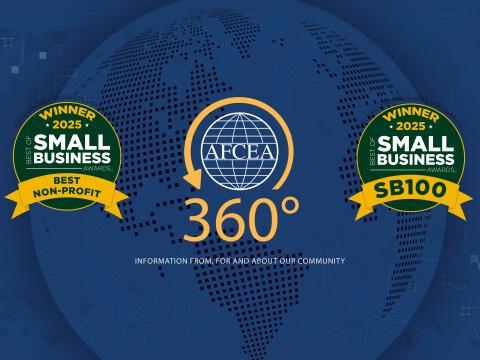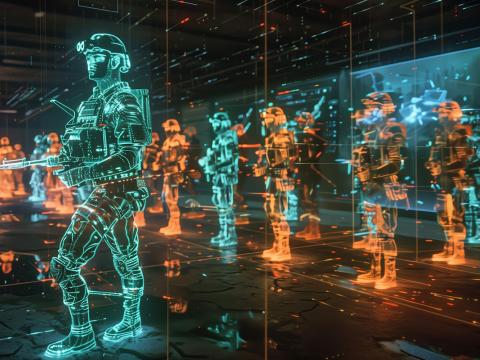Army Virtual Worlds Expert Forges Ahead Without 'Second Life'
As recently as a few years ago, Second Life was a vital, flourishing virtual community in which users carried on their lives, interacting with others and “living” fully imagined existences within the memory of a large computer server.
In fact, Second Life caught the imagination of the U.S. military, and in some cases, members of the services began using Second Life for real-world collaboration and to solve problems shared by all services.
Now, one of the most ardent proponents of virtual worlds technologies for military collaboration has forged ahead and developed a version of the Second Life technology that is able to operate behind secure .mil firewalls, and it is on its way to being certified for secure operation within most military networks.
Douglas Maxwell is science and technology manager with the Army Research Laboratory’s (ARL’s) Simulation and Training Technology Center in Orlando, Florida. He is also a staff researcher with the Naval Undersea Warfare Center in Newport, Rhode Island.
In recent years, he’s been the principal organizer of “Military Lands in Second Life,” or “MilLands,” the section of the virtual community set aside for members of the U.S. armed forces to work on projects of common interest.
Maxwell says the summer 2010 decision by Linden Labs, the firm that originally developed Second Life, to discontinue work on an enterprise version that could operate securely on a server behind a corporate firewall, was a prime motivator behind his work.
“I respect Linden Labs’ decision to do that, because they had to survive as a company,” he explains. But he also wanted to ensure that the effort expended in developing
MilLands did not go to waste.
“We looked for ways,” Maxwell went on, “to transfer the knowledge to an open platform, one that we could own and control, and move forward.”
Maxwell says that with the help of several industry partners, he was able to advance development of Open Simulator, a virtual worlds application similar to Second Life, and successfully transfer the environmental grids and other digital elements of MilLands into MOSES, the Military Open Simulator Enterprise Strategy. He describes MOSES as a “proof-of-concept” information technology project designed to show that virtual worlds environments can be adapted to operate securely.
The effort was made, says Maxwell, on behalf of a large and growing community of experts, both within and outside of the military’s scientific community, who had come to depend on MilLands as a tool for collaboration.
“I wasn’t the only person coming to the conclusion that there was value in this platform,” he explains. “There are many other people in other laboratories and other services who saw that this platform was wonderfully flexible and powerful.”
Maxwell recently assisted the Naval Undersea Warfare Center in utilizing Open Simulator for development of the next generation of U.S. Navy attack submarines.
Maxwell goes on to say that because MilLands operated on the open Internet and was hosted by a commercial company, sensitive data could not be easily integrated into MilLands, which was the original motivation for the development of Second Life Enterprise (SLE). Maxwell credits Linden Labs for giving him and his colleagues enough advance notice that SLE would no longer be developed and making it possible for outside developers to continue the work.
“Linden Labs made the Second Life client open source, and a group of Second Life developers were able to reverse-engineer a suitable server application that could provide the same, or similar, service.” He says, while individuals did some of the outside development, engineers at IBM and Intel also provided support.
The result, says Maxwell, is the Open Simulator server application software that can run in a secure environment behind a .mil firewall but can also operate on the open commercial Internet to facilitate collaboration with military, industry and academic computer experts who are making its continued development possible.
At this time, MOSES has about 370 users, says Maxwell, representing academia (including Tulane University, George Washington University, Colorado Technical University, University of Southern California, University of Central Florida, University of Edinburgh and the Naval Postgraduate School); the military (Naval Undersea Warfare Center/NAVSEA, Air Education Training Command at Maxwell Air Force Base, Air Force Research Laboratory at Wright-Patterson Air Force Base); and industry (Sonalysts, Raytheon).
In an interview during the recent Federal Consortium of Virtual Worlds Conference held at the National Defense University in Washington, D.C., Maxwell says that the next step is “getting the necessary information assurance documents and authorities so that we can deploy it on a proper .mil network.”
He envisions one day being able to run Open Simulator on the Defense Research and Engineering Network (DREN) and its secure-network counterpart, S-DREN. Maxwell says that testing to achieve information assurance certification for MOSES will be taking place during the summer and adds that he recently received tentative approval to test MOSES on the ARL’s segment of the DREN.
Another goal is to make possible authenticated logins on the Open Simulator server using the Common Access Card (CAC) now in use throughout the Defense Department. He also wants to augment the “physics” within MOSES (in other words, how virtual objects behave in a virtual environment) and explore how to better integrate real-world terrain maps and grids to enhance MOSES’ utility in training and simulation exercises.
Maxwell stresses that MOSES is a proof-of-concept “strategy,” and that he is not interested in developing or supporting a monolithic Open Simulator system for the entire U.S. military. Rather, he says he is more interested in “providing guidance and (digital) copies of the MOSES infrastructure to other organizations that want to run it behind their firewalls and put their own data into it.”




Comments